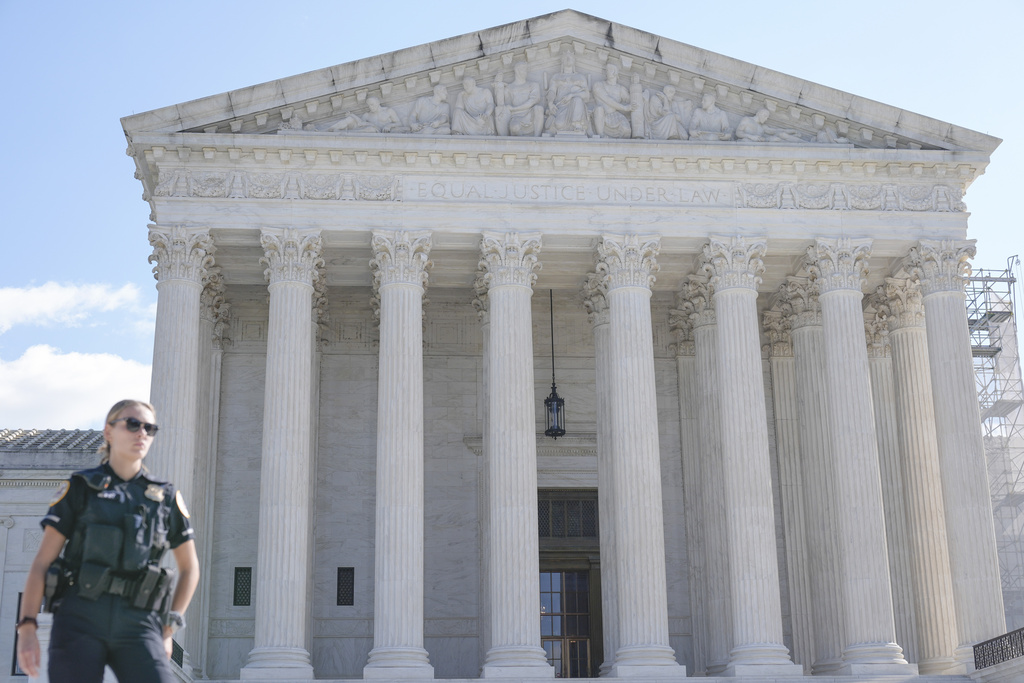Biden’s Coal Plant Regulation Survives Supreme Court Challenge \ Newslooks \ Washington DC \ Mary Sidiqi \ Evening Edition \ The Supreme Court upheld an EPA regulation limiting carbon emissions from coal plants, denying a request from GOP-led states and industry groups to block it. While Justices Thomas dissented, Justices Kavanaugh and Gorsuch signaled potential future challenges. The rule remains a crucial part of Biden’s climate strategy, targeting significant reductions in carbon pollution.
Supreme Court Allows Biden’s Coal Plant Emission Rule to Stand: Quick Looks
- Supreme Court Decision: The court denied a request from Republican-led states and industry groups to halt an EPA rule aimed at cutting carbon emissions from coal-fired power plants, allowing the regulation to stay in place while legal challenges proceed.
- Justices’ Opinions: Justice Clarence Thomas publicly dissented, while Justices Brett Kavanaugh and Neil Gorsuch hinted that future challenges could succeed on some claims. However, they saw no immediate need to block the rule, as compliance deadlines do not start until at least June 2025.
- Regulatory Background: The EPA rule mandates that many coal-fired plants must capture 90% of their carbon emissions or shut down within eight years. It forms part of President Biden’s larger goal to eliminate carbon pollution from the electricity sector by 2035 and across the entire economy by 2050.
- Industry Reaction: The National Mining Association warned that the regulations could threaten power grid reliability by forcing premature plant closures, citing concerns over rising electricity demand.
- Environmental Impact: The EPA estimates the rule could bring up to $370 billion in climate and health benefits, preventing 1.4 billion metric tons of carbon pollution through 2047—equivalent to removing 328 million gasoline cars annually.
Deep Look
Supreme Court Upholds Biden Administration’s Coal Emission Rule Amid Legal Disputes
In a closely watched decision, the Supreme Court on Wednesday allowed a major environmental regulation from the Biden administration to remain in effect, denying a bid by Republican-led states and industry groups to block the rule. The Environmental Protection Agency (EPA) regulation aims to curb planet-warming pollution from coal-fired power plants, a critical piece of President Biden’s climate agenda.
The court’s decision means the rule can proceed while legal challenges continue, offering a temporary victory for the administration. However, the regulation’s future remains uncertain as the case could return to the high court relatively soon.
Dissent and Conservative Skepticism
The Supreme Court’s order was not without dissent. Justice Clarence Thomas stood alone in publicly disagreeing with the decision to let the rule stand. Meanwhile, Justices Brett Kavanaugh and Neil Gorsuch suggested that the challengers might ultimately prevail on at least some of their claims, but they did not see an urgent need to block the rule at this time.
The conservative justices pointed out that compliance with the new emissions standards wouldn’t be required until June 2025, giving ample time for the legal process to play out without immediate consequences for the states or industries involved. Notably absent from the decision was Justice Samuel Alito, who did not participate.
A Crucial Component of Biden’s Climate Strategy
The regulation in question is designed to significantly reduce carbon emissions from coal-fired power plants, which are the nation’s second-largest source of climate-warming pollution. Under the rule, coal plants must capture 90% of their carbon emissions or face shutdown within the next eight years.
The standards represent a major component of President Biden’s pledge to achieve a carbon-free electricity sector by 2035 and net-zero emissions across the U.S. economy by 2050. The EPA projects the rule would bring up to $370 billion in net climate and health benefits, reducing carbon emissions by nearly 1.4 billion metric tons through 2047. This reduction is equivalent to taking 328 million gasoline-powered cars off the road each year.
Legal Context and Ongoing Battles
The EPA’s rule survived initial challenges when a panel from the U.S. Court of Appeals, comprising judges nominated by Presidents Obama and Trump, allowed it to go into effect. The judges reasoned that the states and industry groups were not at risk of immediate harm because compliance deadlines were set for 2030 or 2032, giving the power sector time to adapt.
Despite this, Republican-led states and industry groups, including the National Mining Association, have continued to argue that the rule is overreaching. They claim it threatens the stability of the national power grid by pushing for premature closures of coal plants at a time when demand for electricity is increasing.
The debate over this regulation is just one part of a broader legal struggle surrounding environmental rules. The Supreme Court has a track record of limiting the EPA’s authority, notably through a landmark decision in 2022 that curtailed the agency’s power to regulate carbon dioxide emissions. In June, the court also halted the EPA’s “good neighbor” rule designed to combat air pollution.
A separate ruling from June that overturned the decades-old Chevron precedent—under which courts usually deferred to agencies’ interpretations of ambiguous laws—is expected to make future environmental regulations more challenging to implement. The U.S. Chamber of Commerce cited this ruling in its support for the challenge to the EPA’s new power plant rule.
Implications for the Energy Sector and Environment
While environmental groups have lauded the Supreme Court’s decision to keep the rule intact, industry representatives remain wary. The National Mining Association contends that the rule risks destabilizing the power grid, arguing that it will force many plants to close earlier than planned, potentially jeopardizing the reliability of electricity supplies nationwide.
Conversely, environmental advocates emphasize that the rule is both achievable and necessary. They argue that the standards set forth by the EPA are realistic, cost-effective, and in line with the agency’s legal mandate to address pollution, including harmful greenhouse gases.
Broader Impact on Climate Policy
The case could have wide-reaching implications for future environmental regulations. While the rule’s fate is still tied up in legal challenges, the Supreme Court’s decision not to block it immediately suggests a cautious approach, allowing the regulatory process to continue without interruption for now. However, with past decisions constraining the EPA’s authority, and a growing number of legal challenges from conservative states, the future of comprehensive climate policy remains precarious.
The EPA’s rule is still subject to further review, and the Supreme Court may revisit the case soon. Any decision to strike down or alter the regulation could have significant repercussions for Biden’s climate goals and the broader effort to combat climate change. Until then, the administration continues to press forward, advocating for policies aimed at reducing carbon emissions and fostering cleaner energy sources.
Biden’s Coal







